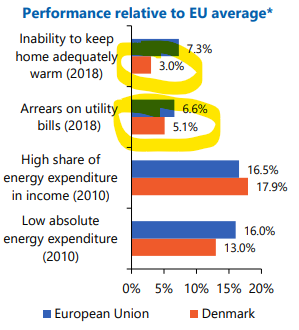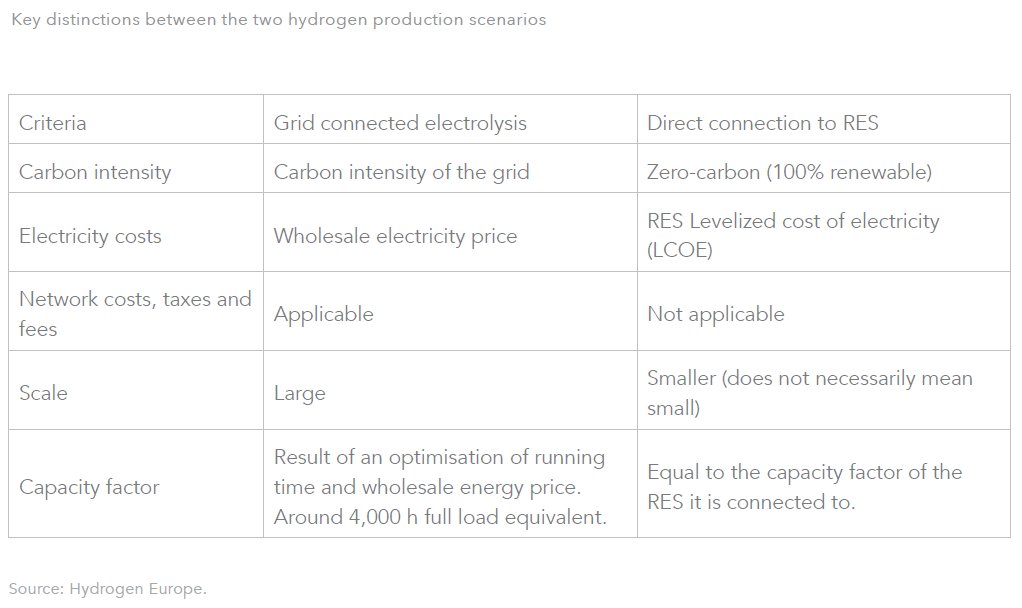
Let's talk about hydrogen blending. Blending up to 20% of hydrogen by volume into the gas grid translates into only about 7% in energy terms, meaning the CO2 emissions reduction benefit is limited to 7% - much less when the H2 is CO2-intensive.
irena.org/publications/2…
irena.org/publications/2…

But if you put the cost of a feed-in tariff hydrogen blending where it would belong - namely on the gas supplier and gas customers - you would also effectively increase the cost of fossil gas through an implicit CO2-price. IRENA estimates the same blending =+0.5Eurocents/kWh.
That could come on top of the +1€ct/kWh per €50/tCO2 in carbon pricing that might be in place in future. 
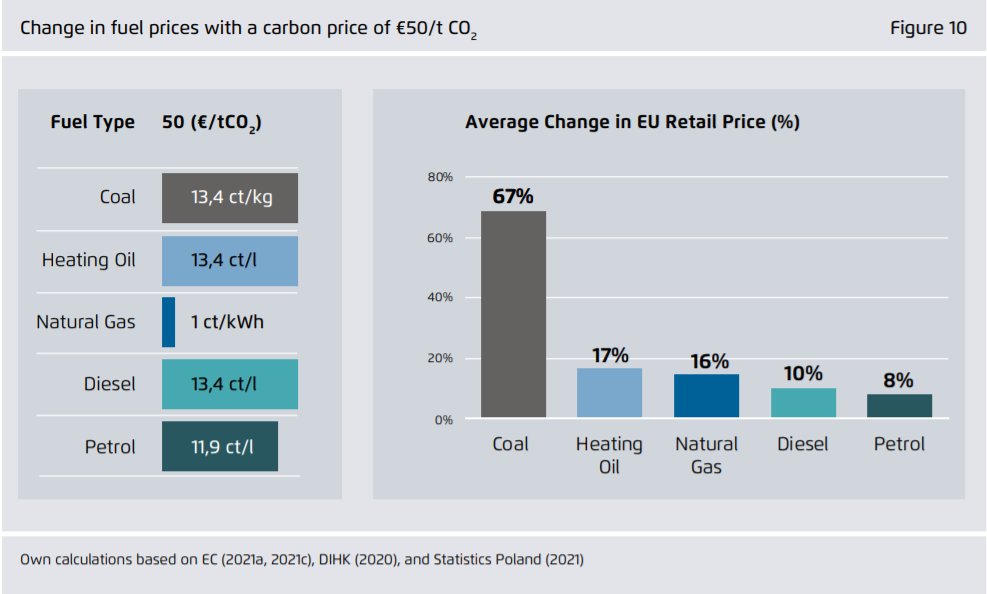
Well in Q4 2020 households paid on average 6.6 Eurocents/kWh for gas, even if prices varied significantly across Europe. So in essence physical blending up to 20% with cost recovery and a carbon price of €100/t would add +2.5ct.
ec.europa.eu/energy/sites/d…
ec.europa.eu/energy/sites/d…
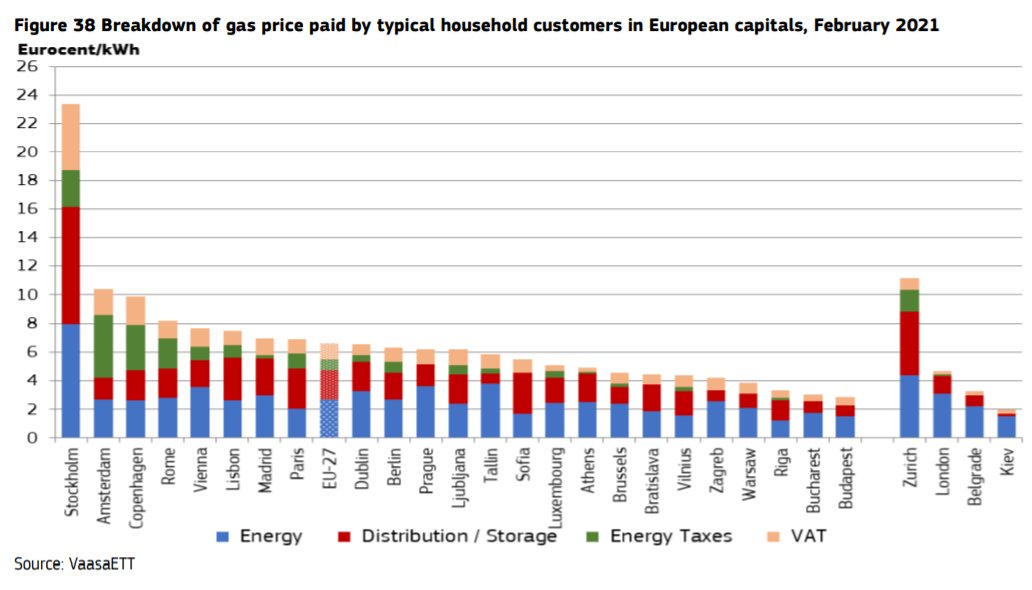
Now imagine you also used the carbon pricing revenues from pricing the carbon content of the natural gas and used it to reduce electricity prices - for example by covering the cost of renewables deployment or reducing electricity taxes.
Together (the price increase of natural gas - and the price decrease of electricity) would go a long way towards reducing the price ratio between electricity and gas in Europe - helping to make heatpumps increasingly competitive with fossil gas boilers across Europe. 
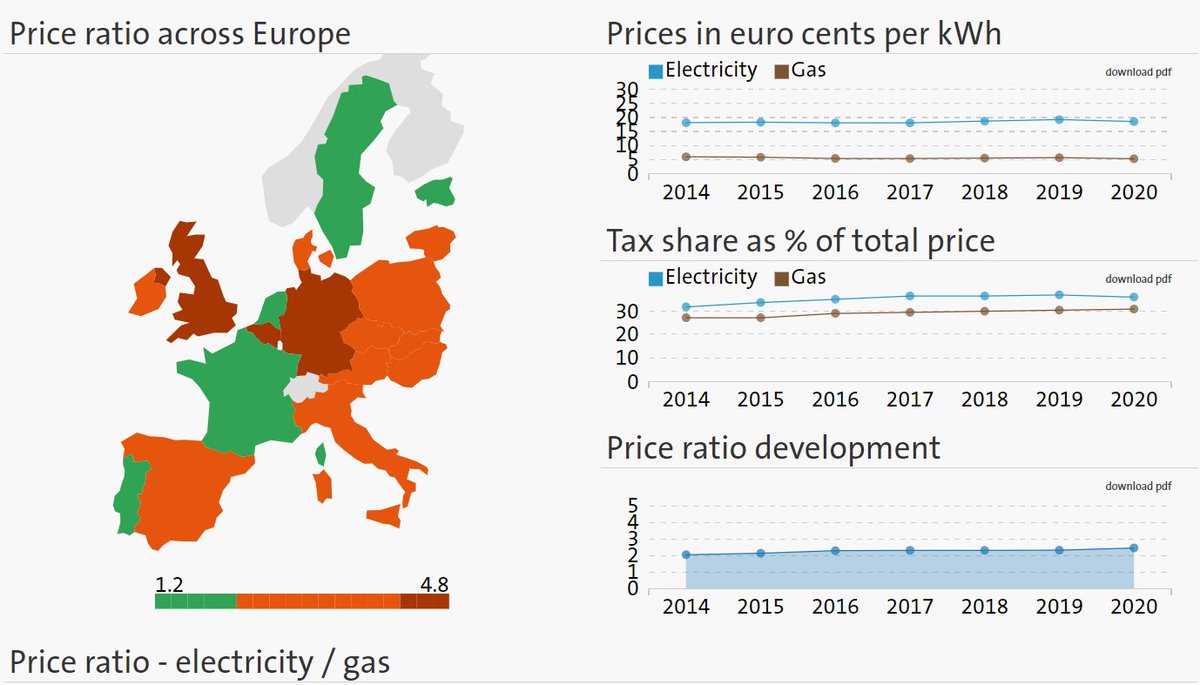
Even in countries like Germany and Belgium where the price ratio is particularly pernicious due to low gas prices and high electricity prices - you don't have to pull all that much at these two levers to make heat pumps the cheaper option for households - as they should be. 

And you could even skip the idea of physical blending and simply do virtual blending instead by allowing gas suppliers to count hydrogen fed into dedicated hydrogen pipelines. This way you could both more quickly and sensibly scale hydrogen production with the same cost recovery.
And the faster you finance the scale-up of green hydrogen this way, the faster we should also see a switch from fossil gas boilers to heat pumps in residential and commercial heating, even with explicit carbon pricing at politically more resilient levels. 

So, I say good riddance, if we want to waste our time talking about blending hydrogen into gas pipelines to scale hydrogen production - game on. Let's just make sure we get the cost-recovery right.
• • •
Missing some Tweet in this thread? You can try to
force a refresh




